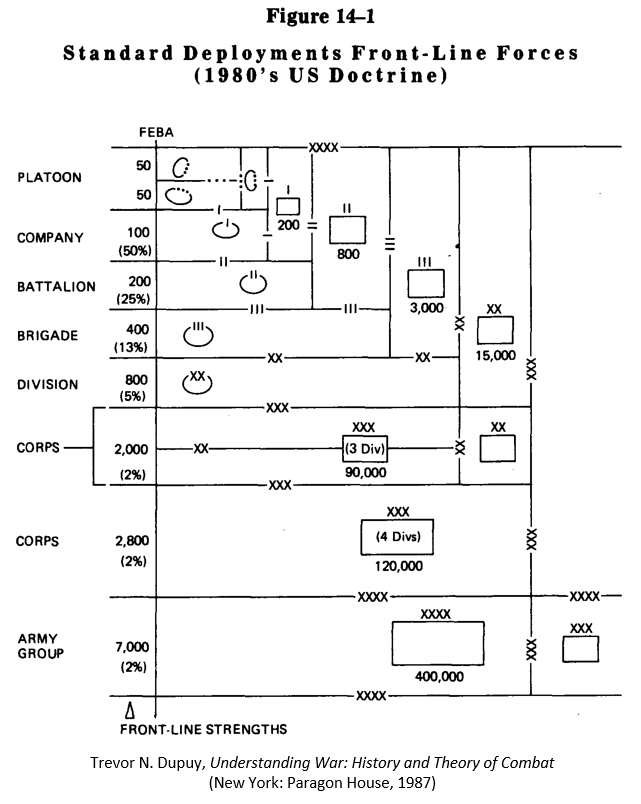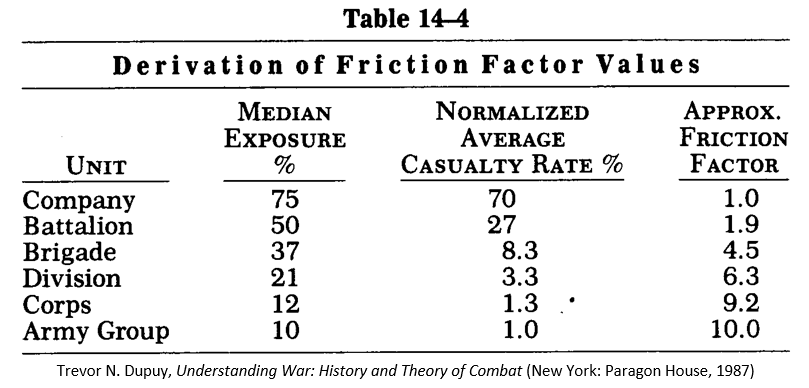 The Prussian military philosopher Carl von Clausewitz identified the concept of friction in warfare in his book On War, published in 1832.
The Prussian military philosopher Carl von Clausewitz identified the concept of friction in warfare in his book On War, published in 1832.
Everything in war is very simple, but the simplest thing is difficult. The difficulties accumulate and end by producing a kind of friction that is inconceivable unless one has experienced war… Countless minor incidents—the kind you can never really foresee—combine to lower the general level of performance, so that one always falls far short of the intended goal… Friction is the only concept that more or less corresponds to the factors that distinguish real war from war on paper… None of [the military machine’s] components is of one piece: each part is composed of individuals, every one of whom retains his potential of friction [and] the least important of whom may chance to delay things or somehow make them go wrong…
[Carl von Clausewitz, On War, Edited and translated by Michael Howard and Peter Paret (Princeton, NJ: Princeton University Press, 1984). Book One, Chapter 7, 119-120.]
While recognizing this hugely significant intangible element, Clausewitz also asserted that “[F]riction…brings about effects that cannot be measured, just they are largely due to chance.” Nevertheless, the clearly self-evident nature of friction in warfare subsequently led to the assimilation of the concept into the thinking of most military theorists and practitioners.
Flash forward 140 years or so. While listening to a lecture on combat simulation, Trevor Dupuy had a flash of insight that led him to conclude that it was indeed possible to measure the effects of friction.[1] Based on his work with historical combat data, Dupuy knew that smaller-sized combat forces suffer higher casualty rates than do larger-sized forces. As the diagram at the top demonstrates, this is partly explained by the fact that small units have a much higher proportion of their front line troops exposed to hostile fire than large units.
However, this relationship can account for only a fraction of friction’s total effect. The average exposure of a company of 200 soldiers is about seven times greater than an army group of 100,000. Yet, casualty rates for a company in intensive combat can be up to 70 times greater than that of an army group. This discrepancy clearly shows the influence of another factor at work.
Dupuy hypothesized that this reflected the apparent influence of the relationship between dispersion, deployment, and friction on combat. As friction in combat accumulates through the aggregation of soldiers into larger-sized units, its effects degrade the lethal effects of weapons from their theoretical maximum. Dupuy calculated that friction affects a force of 100,000 ten times more than it does a unit of 200. Being an ambient, human factor on the battlefield, higher quality forces do a better job of managing friction’s effects than do lower quality ones.
 After looking at World War II combat casualty data to calculate the effect of friction on combat, Dupuy looked at casualty rates from earlier eras and found a steady correlation, which he believed further validated his hypothesis.
After looking at World War II combat casualty data to calculate the effect of friction on combat, Dupuy looked at casualty rates from earlier eras and found a steady correlation, which he believed further validated his hypothesis.
 Despite the consistent fit of the data, Dupuy felt that his work was only the beginning of a proper investigation into the phenomenon.
Despite the consistent fit of the data, Dupuy felt that his work was only the beginning of a proper investigation into the phenomenon.
During the periods of actual combat, the lower the level, the closer the loss rates will approach the theoretical lethalities of the weapons in the hands of the opposing combatants. But there will never be a very close relationship of such rates with the theoretical lethalities. War does not consist merely of a number of duels. Duels, in fact, are only a very small—though integral—part of combat. Combat is a complex process involving interaction over time of many men and numerous weapons combined in a great number of different, and differently organized, units. This process cannot be understood completely by considering the theoretical interactions of individual men and weapons. Complete understanding requires knowing how to structure such interactions and fit them together. Learning how to structure these interactions must be based on scientific analysis of real combat data.
NOTES
[1] This post is based on Trevor N. Dupuy, Understanding War: History and Theory of Combat (New York: Paragon House, 1987), Chapter 14.
